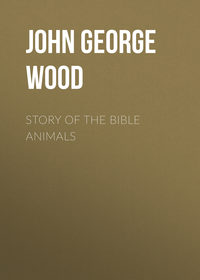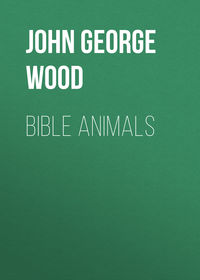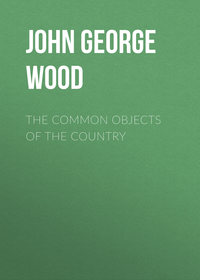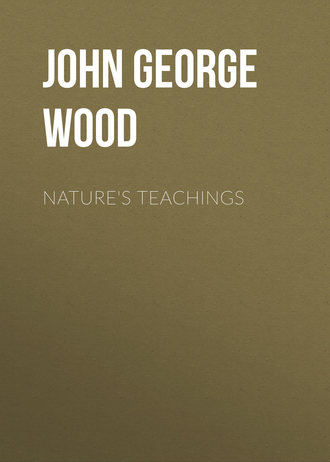 полная версия
полная версияNature's Teachings
There is not a dewdrop which is not a miniature Spectroscope, as it glitters with its wondrous iridescence in the rays of the rising sun; there is not an opal with its shifting hues, nor the splendour of the soap-bubble, nor the nacre of the common river mussel or the ormer shell, which does not owe its beauty to the same principles which govern the Spectroscope. Every green leaf, and blue or pink or yellow petal, every varying tint of the mackerel sky, every blaze of sunset and bluegrey of sunrise, owes its beauty to those wondrous laws of light which had been hidden for so many centuries, until they were unveiled by the simple prism of the Spectroscope. As in so many instances, the revelation lay concealed until the coming of the revealer, whose inspired hand raised the dark veil of centuries.
The ThaumatropeMiddle-aged persons will recollect that since the days of their childhood a great variety of optical apparatus has been invented ending in the word “trope.” This is a Greek word, signifying to turn, and is given to the instruments because they revolve.
All these toys—and they may some day become more than toys—depend on a curious property of the human eye. The reader will remember that in the description of the human eye, as compared with the camera obscura as applied to photography, it was mentioned that the image was thrown from the front to the back, and in the one case was received on a naturally sensitive membrane, and in the other on a film rendered artificially sensitive by chemical means. This membrane is called the “retina,” because it not only receives the impression, but retains it for some little time after the object is removed. It has been calculated that the duration of the image is about the eighth part of a second.
Thus the eyelids are perpetually and unconsciously closing and opening with a rapid movement, popularly called “winking.” This movement is for the purpose of cleansing the eyeball, and, were it not for the image-retaining power of the retina, we should pass a considerable part of our time in absolute darkness. As it is, the impression of external objects on the retina lasts longer than the time occupied in winking, and, in consequence, we are not conscious that any interval of darkness has elapsed.
Again, when we have been looking steadfastly at an object, and then move our eyes, the image of that object is seen in the new focus; and it is worthy of notice that such object is always seen in its “complementary” colour. For example, if we have been looking at a scarlet spot, and suddenly move our eyes, we shall see a spot exactly similar in size and shape, but of green.
I well remember that when I was a boy I was reading with almost feverish anxiety the green handbill of a travelling circus, to which I hoped that I might be allowed to attend. Having finished it, I asked for some note-paper, for the purpose of putting my request in writing, but, to my astonishment, mixed, perhaps, with a little irritation, all the paper supplied to me was of a bright pink. For a time no arguments could convince me that the paper was really white, until by degrees the pink hue became paler and paler, and the paper assumed its normal whiteness.
The fact was, that the eye had become saturated with the green—i.e. the blue and yellow rays—and could see nothing but their complementary colour, which was pink.
A good example of this property may be found in a lighted stick, which, if rapidly whirled round, appears to form a continuous circle of fire. The reason of this is, that the impression made on the retina by the fiery point does not cease until the stick has again come round in its course.
Then there are those well-known chromatic tops, in which are inserted pieces of bent wire. When the top is spun these pieces of wire assume exactly the appearance of transparent jugs, vases, glasses, and similar articles. A very pretty illustration of this principle is given by a little machine, which is made to revolve rapidly by means of a multiplying wheel.
Upon its surface are fixed little pins, with polished globular steel heads, and, when the handle is turned, these heads form the most beautiful and intricate figures with exact accuracy.
Another toy, called the Thaumatrope, or Wonder-turner, is equally ingenious and beautiful, and is sufficiently simple to be made by any one with a slight knowledge of drawing. A disc of white cardboard is cut, and upon each side of it is portrayed some object. If the disc be caused to revolve rapidly, these two subjects will be seen at the same time, the image of each being held on the retina long enough to allow the other to take its place.
Some very beautiful combinations may be made by means of this instrument. For example, a horse may be on one side, and a man on the other, and, by spinning the disc, the man will be seen mounted on the horse. Then we may have a boat on one side, and a rower with his oars on the other. Similarly a mouse can be put into a trap, or a bird into a cage.
The reader must remember that these subjects must be drawn as if they were upside down with regard to each other, so that the man who is to ride the horse is drawn as if he were standing on his head, and the mouse which is to enter the trap looks as if it were lying on its back.
The most simple manner of spinning the disc is by means of two threads, each being inserted near the edge of the disc, and exactly opposite each other.
A very ingenious modification of the Thaumatrope is made by inserting at one side of the disc two strings, of which one is elastic. It is evident, then, that by lengthening or shortening the elastic string, the axis can be changed, and the objects on the opposite sides placed in positions relatively different from each other. Thus the jockey may be made to jump on and off his horse, the bird to go in and out of its cage, the mouse to enter the trap, and so on. This simple invention allows of infinite combinations, so that a tree may be made to sprout, a man to move his limbs, and a bird to flap its wings. It was invented, I believe, by Dr. Paris, author of “Philosophy in Sport made Science in Earnest.”
On the right hand of the illustration are seen three figures, each representing a means of obtaining an ocular delusion through the principle of which we are now treating.
The lower figure is called the Zoetrope, or Wheel of Life. As the reader may see, it consists of a hollow cylinder, revolving on a centre, and having within it a series of figures. When the wheel revolves, and the figures are viewed through the slits, each figure seems to be in lifelike motion, whence the name of Zoetrope. In the present case the figures are those of boys jumping over posts.

The mode in which this effect is produced is as follows:—Suppose that a boy were really to jump over a post, he would go through a series of motions, and his body be placed in a certain series of positions, before he cleared the post. Supposing, then, that several points were chosen in his course, and his body drawn as it would appear at these points, and the drawings placed in their proper order in the Zoetrope, it is evident that the figures must appear in movement. Before the retina loses the image of the boy standing in front of the post, it takes in that of the boy stooping, with his hands on the top of the post, and so on until he has reached the ground on the opposite side.
Another mode of producing the same effect, called the Phantasmascope, is seen above the zoetrope. In this case the images are placed on the inside of the disc, which is held opposite a mirror, and the figures viewed through the slits.
The last of these figures is the rather complicated one, like the back of an “engine-turned” watch. This is called the Chromatrope, or Wheel of Colour, and is always a favourite object in a magic lantern. It consists of two circular plates of glass, one upon the other, and painted in variously coloured curved lines, as seen in the illustration. When the image is thrown upon a screen, and the glass plates turned in opposite directions, a most singular and beautiful effect is produced. The lines, unless the eye follows them very closely, disappear, and torrents of coloured spots seem to pour from the centre to the circumference, or vice versâ, according to the direction in which the glass wheels are turned. So perfect is the illusion, that it is almost impossible to believe that the movement is only circular, and not spiral.
Now we will pass from Art to Nature. The figure on the left hand of the same illustration represents part of one of the Wheel Animalcules, so called because they look exactly as if the fore-part of their bodies were furnished with two delicate wheels, running rapidly round, and evidently moving or stopping at the pleasure of the owner.
Soon after the powers of the microscope became known, these Wheel-bearers were discovered, and for a long time they were thought to have a pair of veritable revolving wheels upon their heads. They were naturally held in high estimation, as, although almost every kind of lever can be found in the animal world, a revolving wheel had never been seen. However, as the defining powers of the microscope improved, the so-called wheels were found not to be wheels at all, but stationary organs, and that their apparent revolution was nothing but an optical delusion.
The wheels are, in fact, two discs, around the edges of which are set certain hair-like appendages, called “cilia,” from a Latin word signifying the eyelashes. Each of the cilia has an independent motion of its own, and, as they bend in rapid and regular succession, they produce an effect on the eye similar to that of a revolving body. As for the animal itself, they produce a double effect, either acting as paddles, and forcing the animal through the water, or, when it is affixed to some object, causing a current which drives into its mouth the minute beings on which it feeds.
The particular species of Wheel-hearer whose mouth is here shown is called scientifically Limnias ceratophylli. It derives the latter name from the fact that it is mostly found on the submerged stems and leaves of the Hornwort (Ceratophyllum), which is very common in ponds and slow streams. The creature is, however, to be found on the water-growing plants, and Mr. Gosse, in his “Evenings with the Microscope,” gives a very full and graphic account of itself and its habits.
He specially mentions the use of the wheels, and, by dissolving a little carmine in the water, had the pleasure of seeing the coloured granules swept into the mouth by the current caused by the cilia through the jaws, and so into the stomach.
USEFUL ARTS
CHAPTER I.
PRIMITIVE MAN AND HIS NEEDS.—EARTHENWARE.—BALL-AND-SOCKET JOINT.—TOGGLE OR KNEE JOINT
Contrast between Savagery and Civilisation.—Manufacture of Weapons.—Earthenware of Art.—Sun-baked Vessels.—Earthenware of Nature.—Nest of Pied Grallina.—Analogy with the Babylonish Brick.—Nest of the Oven-bird.—A partitioned Vessel.—Necked earthenware Vessels.—Nests of Eumenes, Trypoxylon, and Pelopœus.—Proof of Reason in Insects.—The Ball-and-socket Joint.—“Bull’s-eye” of Microscope.—The human Thigh-bone.—Vertebræ of the Serpents and their Structure.—The Sea-urchin and its Spines.—Legs and Antennæ of Insects.—The Toggle or Knee Joint, and its Use in the Arts.—The hand Printing-press and the Toggle-joint.—The human Leg and Arm.—Power of the natural Toggle-joint.—Fencing and Boxing.—Heads of Carriages.—“Bowsing” of Ropes.—Leaf-rolling Caterpillars.
IN the primitive ages of Man the aids to civilisation were very few and very rude. Some of them, especially those which relate to hunting and war, have already been mentioned, and we now have to deal with some of those which bear upon domestic life.
Here we are in some little difficulty, for it is not very easy to draw the line where domestic life begins, or the mode in which it shall be defined. We may at all events connect domestic life with a residence of some sort, and may, in consequence, neglect all such primitive savages as need no domestic implements.
Such, for example, are the few surviving Bosjesmans of Southern Africa, not one of whom ever made a tool or an implement, or looked beyond the present day. The genuine Bosjesman can make a bow and poison his arrows, and he can light a fire; but there his civilisation ends. He cannot look beyond the present hour, he has not the faintest notion of making a provision for the future, nor did his wildest imagination ever compass the idea of a pot or a pan.
He kills his prey, and, if hunger be very pressing, he will eat it at once without waiting for the tedious ceremony of cooking; or at the best will just throw the meat upon the fire, tear it to pieces with his teeth, and swallow it when it is nothing but a mass of bleeding flesh, charred on the outside, and absolutely raw within. The Bosjesman has not even a tent which he can call his own, any bush or hole in the ground answering for a house as long as he wants it, and then being exchanged for another.
As far as we know, the only trace of civilisation in the Bosjesman is his manufacture of weapons, and even his bow and arrows are of the rudest and clumsiest forms. Nor is it likely that he will ever advance any further; for, as is the wont of all savage tribes, he is disappearing fast before the presence of superior races, and will shortly be as extinct as the Tasmanians, the last of whom died only a few years ago.
EarthenwareThe advent of real civilisation seems to depend largely upon the construction, not of weapons, but utensils, and the most useful of these are intended either for the preparation or the preservation of food. That such vessels should be made of earth is evident enough, and it is worthy of remark that the rude earthenware pot of the naked savage and the delicate china of Sèvres should both be products of the earth, and yet be examples of the opposite ends of civilisation.
The most primitive earthenware vessels were simply baked in the rays of the sun, the use of fire for hardening them being of later date. Rude and simple as they are, some of these vessels possess tolerable strength, and can answer every purpose for which they are intended. I possess several pots made by the aborigines of the Essequibo district. They are very thick and heavy in proportion to their dimensions, and are still so fragile that I have been obliged to bind them with string whenever they are moved.
Simple as they are, however, they are pleasing to the eye, chiefly, I presume, because they are made for a definite office, and fulfil it, and have no pretence about them. Then, as they are moulded by hand alone, without any assistance from machinery of any kind, even a wheel, the individuality of the maker is stamped upon them, and no two are exactly alike either in form, colour, or ornament. A couple of these rude vases are to be seen on the right hand of the accompanying illustration.
On the left hand of the same illustration are shown two examples of earthenware vessels made by birds, which are nearly, if not quite, as good as those made by the hands of civilised man.
The upper figure represents the nest of the Pied Grallina (Grallina Australis), a bird which, as its specific name implies, is a native of Australia.
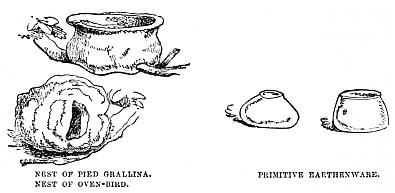
This nest is formed chiefly of clay, but a quantity of dried grass is always mixed with it, and serves to bind it together. If one of these nests be broken up, and compared with the bricks of which ancient Babylon was built, it will be found that they are almost identical in material, and that both are merely baked in the sun. In form it so closely resembles an Essequibo jar in my possession, that if it were removed from the branch, and similarly coloured, it would not be easy to distinguish the one from the other.
Below this is the nest of the Oven-bird of South America (Furnarius fuliginosus), a bird allied to our common creeper. The drawing was taken from a specimen in the British Museum.
Like the nest of the Grallina, it is placed upon some horizontal bough, and fixed so firmly that it cannot fall except by being broken to pieces. Not being afraid of man, the Oven-bird often chooses a beam in some outhouse for a resting-place, and has been known to build even on the top of palings. As may be seen by reference to the illustration, the nest is a very conspicuous one, and concealment is almost impossible.
As in the Grallina nest, the material is remarkably hard and firm, as indeed is necessary, to allow it to withstand the effects of the rain-torrents which fall during the wet seasons of the year.
There is a curious analogy in this nest with many articles of earthenware. Not only among ourselves, but among uncivilised races, earthenware vessels are constructed with partitions, so as to divide one portion from another. If one of these nests be cut open, it will be found to have a sort of partition wall across the interior, rising nearly to the top of the dome, and so dividing it into two parts. The wall also answers another purpose—i.e. that of strengthening the entire structure. Within the inner chamber is the real nest, which is lined with a thick layer of feathers, the outer chamber being bare, and, as it is thought, being occupied by the male.
We now come to pottery of a more elaborate shape. Both in the Grallina nest and the earthen pot of the Essequibo Indian we have a vessel with a mouth nearly as wide as its greatest diameter, and with a lip which is very slightly turned over. There are, however, many varieties of pottery in which the neck is narrow and long, and the lip is boldly formed. Some examples of this form are given on the right hand of the accompanying illustration.
On the left hand are shown some nests of a solitary wasp belonging to the genus Eumenes. It is a British insect, but seems to have been little noticed, except by professed entomologists.
It especially haunts heather, and affixes to the stems of the plant its little globular nests, which are made of mud, and shaped as seen in the illustration. Perhaps some of my readers may have seen the “Napier Coffee Machine,” which draws the coffee into a glass globe furnished with a short neck. The globe is shaped exactly like the nest of our Eumenes, and, when I first saw one, I could not remember why its shape was so familiar to me.
As is the case with the birds’ nests which have been mentioned, the mud of which the walls are built is of a most tenacious character, and, when dried in the sun, can resist the heaviest rain. The cells are intended as rearing-places for the young, only a single egg being placed in each cell, which is then stocked with small caterpillars by way of food.
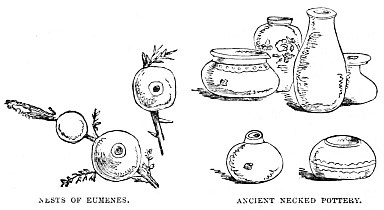
There is a South American insect also belonging to the solitary wasps, and remarkable for building a round nest exactly similar in material, and nearly identical in shape, with that of the Eumenes. Its scientific title is Trypoxylon aurifrons. The nest of this insect has a much wider mouth than that of the Eumenes, and exactly resembles the upper left-hand jar in the illustration.
Another South American solitary wasp, belonging to the genus Pelopœus, makes nests of similar material, but nearly cylindrical in shape instead of globular. The nest is built up of successive rings of moistened and well-kneaded clay, exactly as human houses are built by bricklayers. Indeed, the process of making a Pelopœus’ nest has been happily compared to that of building a circular chimney.
I may as well mention here that the name Pelopœus is formed from a Greek word signifying mud, and that the entire word may be translated as “mud-worker.”
As a proof that these insects possess reason as well as instinct, Mr. Gosse mentions that one of them, instead of making her nest for herself, utilised an empty bottle, and, after storing it with spiders, stopped up the mouth with clay. Finding, after an absence of a few days, that the nest had been disturbed, she removed the spiders, inserted a fresh supply, and then closed the mouth as before.
Ball-and-socket JointWe will now see how some of the most useful mechanical inventions have had their prototypes in Nature.
There is, for example, the well-known “Ball-and-socket joint,” without which many of our instruments, especially those devoted to optical purposes, would be impracticable.
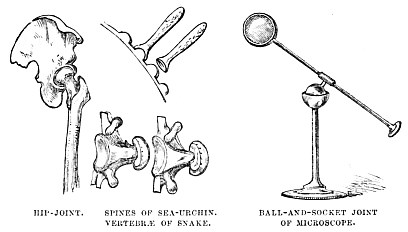
The figure on the right hand of the illustration represents the “bull’s-eye” of my own microscope. It will be seen that there is a ball half sunk in a cup, so that it can be turned in any direction. In point of fact, the upper part of the ball is nearly concealed by another cup, but, in order to show the structure, the upper cup has been removed. Who was the inventor of the ball-and-socket joint I do not know, but I have little doubt that he must have had in his mind many natural examples of this joint, three of which are represented in the illustration.
On the left hand are seen the upper part of the human thigh-bone and that part of the hip-bone into which it fits.
The reader will see that at its upper end the bone takes rather a sharp turn, and is then modified into a ball. This ball fits into a corresponding socket, technically named the “acetabulum,” and is thereby endowed with freedom of motion in almost every direction. Generally we do not practise our limbs sufficiently to develop that full freedom, but those who have seen any good professional acrobats must have been struck with the wonderful mobility of which the human body is capable.
The socket is not a deep one, but dislocation of the hip is exceedingly rare, the bone being held in its place by three powers. The first is due to a short ligament, which, however, does not always exist, but, when it is present, is useful in retaining the bone in its place. Then there is the contractile power of the thigh muscles, which are always forcing the ball into the socket. Lastly, there is the pressure of the atmosphere, a force which is seldom taken into consideration, but which has great influence on many parts of the human frame. This part of the subject will be resumed when we come to treat of Atmospheric Pressure.
The arms are jointed to the shoulder-blades in a very similar manner, the upper arm-bone, or “humerus,” being furnished with a rounded end, and fitting into a cup-like cavity in the shoulder-blade, or “scapula.” This formation can easily be seen by separating the different bones of a shoulder of mutton.
At the bottom of the illustration are given two vertebræ of a snake, separated in order to show their structure. It will be seen that each joint has a ball in front and a socket behind, thus giving the creature that wonderful flexibility which is quite proverbial, and without which it could not seize its prey.
The following eloquent passage is taken from Professor Owen’s work entitled “The Skeleton and the Teeth:”—
“Serpents have been regarded as animals degraded from a higher type, but their whole organization, and especially their bony structure, demonstrate that their parts are as exquisitely adjusted to the form of their whole, and to their habits and sphere of life, as is the organization of any animal which we call superior to them.
“It is true that the serpent has no limbs, yet it can outclimb the monkey, outswim the fish, outleap the Jerboa, and, suddenly loosening the coils of its crouching spiral, it can spring into the air and seize the bird upon the wing: all these creatures have been observed to fall its prey.
“The serpent has neither hands nor talons, yet it can outwrestle the athlete, and crush the tiger in the embrace of its ponderous overlapping folds. Instead of licking up its food as it glides along, the serpent uplifts its crushed prey, and presents it, grasped in the death-coil as in hand, to its slimy, gaping mouth.
“It is truly wonderful to see the work of hands, feet, and fins performed by a modification of the vertebral column—by a multiplication of its segments with mobility of its ribs. But the vertebræ are especially modified, as we have seen, to compensate, by the strength of their numerous articulations, for the weakness of their manifold repetition, and the consequent elongation of the slender column.


